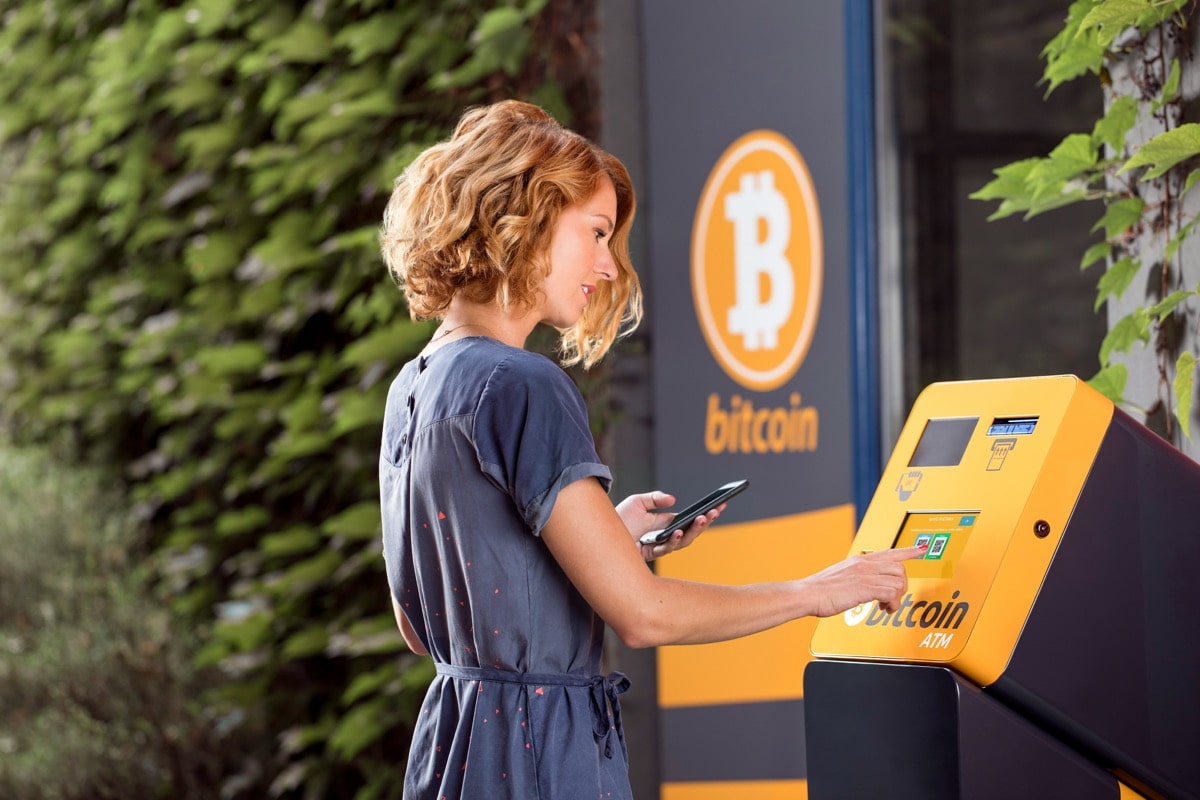Victims of crypto ATM scams lost hundreds of millions of dollars last year, and the year before that. Bitcoin ATMs, though created for user convenience, are now fervently exploited by scammers. The thing with stolen crypto is that it’s next to impossible to retrieve. Therefore, consumer awareness is key to protection from this kind of scheme.

How Crypto ATMs Turn From Cash Out Tools to Scam Source
Bitcoin ATMs remind your regular cash machines just with a special symbol on them. They are a practical and convenient way to convert cryptocurrency to local fiat if one needs that.
The ATMs feature easy on-screen instructions, enabling you to sell a specified quantity of cryptocurrency you own to a vending machine in exchange for cash. However, it’s the machine’s second functionality that gets most exploited. A crypto ATM can also be used to deposit fiat to any given crypto wallet address. That’s where scammers come to the stage.
Crypto ATM Urgency Schemes
They use a typical scheme. Someone calls or texts you, better at dawn, late in the evening, or even in the middle of the night, in an effort to find you sleepy, distracted, and slow-minded. They may claim there’s an emergency affecting your family, someone is put in jail or an accident, and use all possible types of urgent money need cases. Then scammers urge the victim to withdraw cash from their bank account and deposit it in a Bitcoin ATM without further delay, since your dear ones are in big trouble. If you follow the instructions, you say goodbye to your money with little chance of a potential refund.
Impersonation Schemes
Other more plausible reasons scammers use to lure money from victims include something going wrong with the money or accounts you own. Perhaps, they say that there’s suspicious activity on your Amazon account, potential unauthorised charges on your bank account, or even that you unwillingly became linked to money laundering or drug smuggling. Scammers impersonate government officials, business representatives or tech support. They may pretend to offer a work-from-home job and ask you for an initial deposit of some kind. Anything would do, as long as scammers offer you help, which of course involves transferring money via a crypto ATM.
How Serious Is the Problem?
You might think the schemes mentioned above are not new, who will fall for that? That is until yourself or your relatives are targeted. Senior people are most likely to fall victim to similar scams as they are not familiar with crypto and other innovative payment technology, and tend to be more gullible and less likely to report fraud.
Statistics on Bitcoin ATM Fraud
The U.S. Federal Trade Commission (FTC) shares alarming statistics. While, in 2020, people lost just $12 million annually to crypto ATM scams, by 2023 this amount surged to $114 million per year. In the first six months of 2024, consumers lost $65 million to fraudsters leveraging Bitcoin ATMs, suggesting that the scam growth continues.
Predictably, consumers over the age of 60 are three times more likely to fall victim compared to their younger peers. What’s interesting, though, is that the median money loss to this type of fraud is $10,000, irrespective of the victim’s age. This is a serious amount, so fraudsters must be very convincing and ingenious to persuade people to send such a sum to an unknown account or QR code link.
Why Criminals Choose Crypto ATMs
Scams like this have become more common as the number of Bitcoin ATMs in common public places like convenience stores and gas stations has grown over the years. Today, there are over 38,000 Bitcoin ATMs worldwide, compared to just 13,000 in 2020.
While that’s still far fewer than the 3.5 million traditional ATMs, which are also used by criminals for the same schemes, Bitcoin ATMs are newer, and many people don’t understand how they work. This lack of awareness makes it easier for scammers to trick not just crypto users, but also people who don’t use digital currencies at all. Some reports indicate that people don’t even understand they’re using an actual ATM, as criminals describe them as “safety lockers” and they still differ from traditional cash vending machines.
Crypto Mixers Role
Furthermore, crypto ATMs allow fraudsters to get victims’ money immediately and irreversibly. Crypto wallets do not have escrow accounts or intermediaries to slow down the transfer. Besides, it’s very hard to identify the owner of the wallet address. They could quickly transfer the stolen amount to so-called crypto mixers – tools that enhance transaction privacy and obscure the transaction trail. In 2022, crypto addresses tied to illicit activity transferred nearly 10% of their funds to mixers, with the 30-day moving average value received by these privacy tools reaching an all-time high of $51.8 million worth of cryptocurrency. Though 2023 saw a decline in funds sent to mixers from illicit addresses – $504.3 million, down from $1.0 billion in 2022 – these amounts can still easily cover all the crypto ATM scam proceeds. This way, cash stolen through crypto ATM scams is almost impossible to retrieve.
Detecting Potential Scam
One should always know one’s enemy to defeat it. In this particular case, awareness about fraud techniques and potential reporting procedures can significantly reduce crypto ATM fraud levels. Make sure to not only check the information yourself, but pass it to your relatives and friends, especially older ones.
To avoid money loss to a crypto ATM scam, follow these simple rules:
- Do not open links or call back phone numbers from the unknown sources even if they seem legitimate. If you want to check the information about an error, unauthorised account activity, etc., go to the official website of the financial institution or e-commerce platform and use the contacts provided there.
- Never withdraw cash in response to unexpected calls or messages and definitely do not deposit it into whatever account or cash machine they tell you to.
- If they say you need to use a Bitcoin ATM to fix the problem, that’s surely a scam. No legitimate institutions like government entities, law enforcement, employers or tech support companies would use such a specific solution to address the issue.
- Do not fall for urgency calls. The more urgent they claim the issue to be, the more pressing they are for action, the less time they give you to verify the story and think about what’s happening, the more chances that this whole conversation will end up in you losing money to scammers.
- Many crypto ATMs today display some kind of scam warning. For instance, some Bitcoin Depot machines have a permanent label attached that reads “Warning: Have you received a phone call from someone demanding payment in Bitcoin? This is likely a scam. All Bitcoin transactions are irreversible.” Other messages may appear on screen while scanning a wallet code or going through any other transaction stage. Credit unions and banks also post similar announcements on their webpages. Pay close attention to those warning signs and messages.
- And yet, many people who have been scammed say they never saw any warning when walking up to a Bitcoin ATM. Therefore, critical thinking is your main weapon. If you’re not sure about the request or an offer, check the info on potential scams by your local law enforcement agencies, like the one provided by FTC. If you suspect you have been targeted by scammers, do not hesitate to report it. It would help not only you, but also people who might face similar situations. The links provided here are valid for U.S. citizens, but any other country has a body responsible for consumer protection. If you’re not sure which entity that is, consulting the police might be a good option.
Summary
Crypto ATMs might seem like a novel, easy way to send or get money, but where there’s innovation people know little about, scammers would surely follow. They may pretend to be family members in trouble, bank representatives, tech support, or even government officials. None of these people would actually ask you to deposit cash into a crypto ATM for whatever preposterous reason. Remember that and stay alert.
Once the money is sent to a given address, it’s gone. And with scam-related crypto losses jumping from $12M in 2020 to $114M in 2023, it’s more important than ever to slow down and double-check. If something feels off, pause and verify, try to calm down and think clearly, cause scammers prey on your panic and the sense of urgency. Do not be shy to check the government resources on fraud or contact relevant agencies to report the incident.









